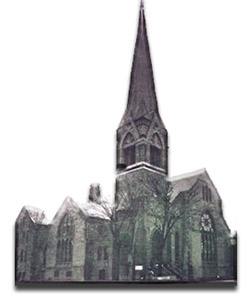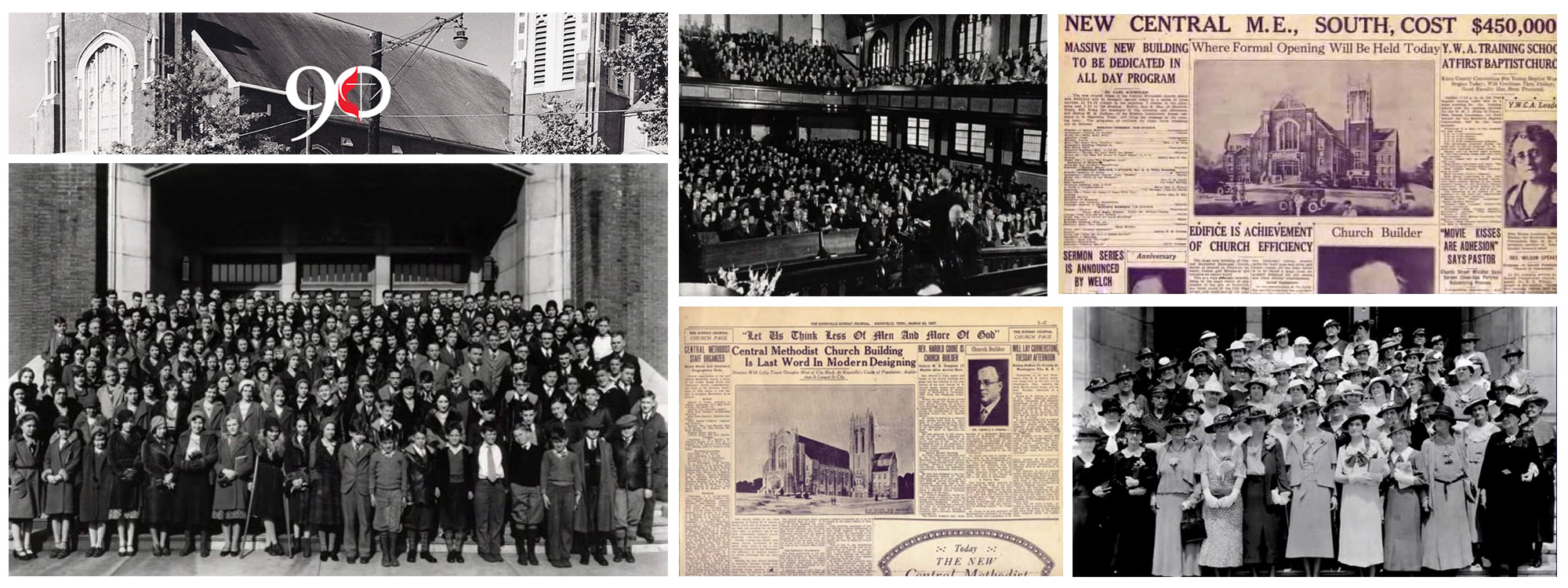

Original Broad Street Church Building
Our History
Central United Methodist Church formed in 1925 when the congregations of Broad Street Church and Centenary Church decided to merge. Broad Street Church opened in 1870. Fire damaged the Broad Street building in 1924, and the congregation met in other locations while repairs were being made. Centenary Church opened in 1883 and located within a mile of the Broad Street Church. Central Methodist Episcopal Church, South, as it was the n known, met in the Centenary Building at the corner of Broad and Silver while a new building was constructed.
On March 20, 1927, the first service took place in the new building.
Almost 2,000 members filled the sanctuary for three services that day. Located in the population center of the city, the new building was hailed for its classic beauty, acoustics, and facilities. The church building included a gymnasium, handball courts, showers, and places for scout troops and other community organizations to meet. The church members’ loss of jobs and income in the stock market crash of 1929 and the ensuing “Great Depression” threatened the financial survival of the new church. The members pulled together and made personal sacrifices to overcome the financial crisis. The members and leadership dedicated in the building in 1945.
In recent history, the neighborhoods around the church building suffered from interstate construction, neglect, and the migration of families to the developing suburbs. Many of Central’s families continued to worship here, even if they lived further away. Revitalization is bringing new life to inner city neighborhood, but the community needs are still here. Twenty-two senior pastors served at Central.
On November 5, 2005, the church building was recognized as worthy of preservation and placed on the National Register of Historic Places. A listing in the National Register honors a historic place by recognizing its importance to its community, state or the nation.
We embrace our history, but we look towards the future of how this church can serve the congregations for future generations as it did for the past generations.
Our History
Central United Methodist Church formed in 1925 when the congregations of Broad Street Church and Centenary Church decided to merge. Broad Street Church opened in 1870. Fire damaged the Broad Street building in 1924, and the congregation met in other locations while repairs were being made. Centenary Church opened in 1883 and located within a mile of the Broad Street Church. Central Methodist Episcopal Church, South, as it was the n known, met in the Centenary Building at the corner of Broad and Silver while a new building was constructed.
On March 20, 1927, the first service took place in the new building.
Almost 2,000 members filled the sanctuary for three services that day. Located in the population center of the city, the new building was hailed for its classic beauty, acoustics, and facilities. The church building included a gymnasium, handball courts, showers, and places for scout troops and other community organizations to meet. The church members’ loss of jobs and income in the stock market crash of 1929 and the ensuing “Great Depression” threatened the financial survival of the new church. The members pulled together and made personal sacrifices to overcome the financial crisis. The members and leadership dedicated in the building in 1945.
In recent history, the neighborhoods around the church building suffered from interstate construction, neglect, and the migration of families to the developing suburbs. Many of Central’s families continued to worship here, even if they lived further away. Revitalization is bringing new life to inner city neighborhood, but the community needs are still here. Twenty-two senior pastors served at Central.
On November 5, 2005, the church building was recognized as worthy of preservation and placed on the National Register of Historic Places. A listing in the National Register honors a historic place by recognizing its importance to its community, state or the nation.
We embrace our history, but we look towards the future of how this church can serve the congregations for future generations as it did for the past generations.



